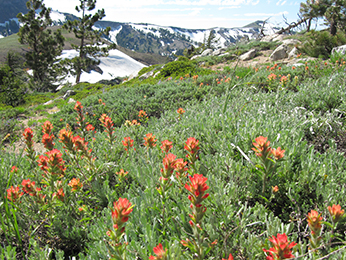Sign up to receive updates about Connectivity Advance Mitigation (CAM) in California.
Subscribe
Program Overview

California wildlife is losing the ability to move and migrate as habitat conversion and built infrastructure disrupt or impede migration corridors. Effective January 1, 2022 via Senate Bill 790, Fish and Game Code §1955-1958, titled “Wildlife Connectivity Actions,” allows CDFW to adopt guidelines to promote habitat connectivity projects in California. The Wildlife Connectivity Advance Mitigation Guidelines (Guidelines) create incentives for improving habitat connectivity that will protect and enhance movement and migration for California’s most threatened species. The Guidelines are applicable to the Conservation and Mitigation Banking Program and Mitigation Credit Agreements (MCAs), as part of the Regional Conservation Investment Strategy (RCIS) Program (Fish & G. Code, § 1955, subdivision (f)).
CDFW has the authority to create credits under these programs for actions that improve aquatic or terrestrial habitat connectivity inhibited by built infrastructure or habitat fragmentation. Credits created from wildlife connectivity actions can then be sold by sponsors to permittees needing compensatory mitigation to offset their project’s environmental impacts. Sponsors can, therefore, earn a return on their ecological investment by selling credits created as part of the wildlife connectivity action. The credits created can fulfill compensatory mitigation requirements established under state or federal environmental laws, including but not limited to the California Environmental Quality Act (CEQA), the California Endangered Species Act (CESA), and Lake and Streambed Alteration Agreements (Fish & G. Code, § 1957, subdivision (e)).
CAM Webinar
10/4/2024 CDFW Connectivity Advance Mitigation webinar.
Webinar Slide Deck (PDF)
Program Guidelines and Resources
For further information about Connectivity Advance Mitigation (CAM), contact the CAM Team at MitConnect@wildlife.ca.gov.
Associated Programs
Resources